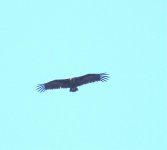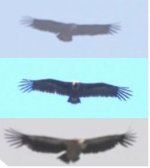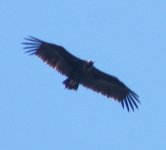Oregonian
Well-known member
This bird, in eastern Portugal, was one of the first old-world vultures I had seen, and I identified it as a Griffon Vulture. Later in the trip we saw lots of Griffon Vultures in Extremadura, Spain, and got a good look at a Black Vulture.
Now that I look over my photos, this one appears to be a Black Vulture. Should I label it that way, or is it a bit too fuzzy? I have a few other images of the same bird, at Idanha-i-Nova.
Now that I look over my photos, this one appears to be a Black Vulture. Should I label it that way, or is it a bit too fuzzy? I have a few other images of the same bird, at Idanha-i-Nova.






